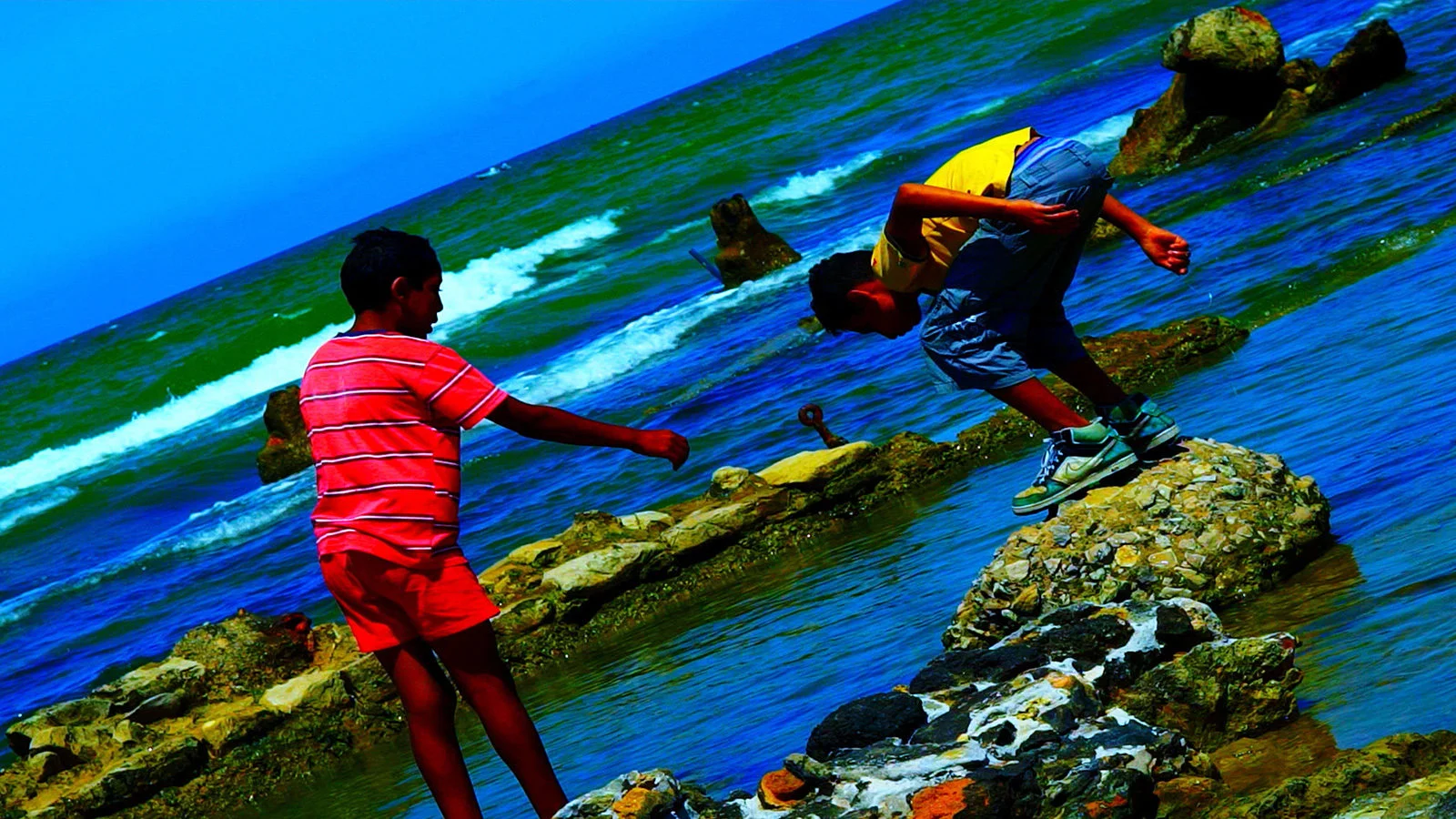The Image Book: Oh So Meaningful But… Um… So Long… And… Um…
By Liam Lacey
Rating: B+
Jean-Luc Godard's latest film The Image Book, which premiered at Cannes last May, is generally consistent with the clip-text-music montages he has been creating for the past 20 years or so. That means another dense assemblage of quotations from his own and others' works — using onscreen text, voice-over, music, television and internet footage, and shots from phone cameras. Images are distorted, bleached or rendered in hot acid colours, punctuated by abrupt fades to black. The sound mix, in various languages, jumps around the theatre, sometimes to startling effect.
There's a lot of work put into this, between the 88-year-old director and his team of collaborators.
For some reason, I was the only person in the theatre at the press screening I attended, which enhanced the sense that I was trying to find some link between my personal stream-of-consciousness and the torrent of fragmentary ideas and images and sounds coming off the screen. (Having read a few reviews of the film, I get the impression most critics are similarly grasping the dark.) I recognized some of the film references — Jean Vigo, F.W. Murnau, Tod Browning — and some of the paintings (Gaugin, Munch, and that anonymous 16th century French painting of the woman pinching her sister's nipple). Coherence was hard to establish but the memory prompts, the lurid colourization and off-beat editing held the attention.
Occasionally, I'd try to find a coherent argument about film and capitalism in the assorted pronouncements and assertion about words and images. You could forge a connection to Marshall McLuhan, and the way artists find inspiration from retrieving the detritus of civilization; or Marshall Berman's book, All That Is Solid Melts into Air: The Experience of Modernity, about how capitalism feeds on destruction.
A lot of it is sort of thematic free-association: A long section on hands and fingers, another on trains, another on images of people being thrown into water, blending fiction films with footage of real-life atrocities, suggesting a compulsive cycle of cruelty and murder. I was reminded again of how bizarre it is to hear contemporary conservatives harrumphing about how post-war leftist French philosophers have undermined the "values of Western Civilization" without ever considering how those “values” might have led to Auschwitz and Hiroshima.
At other times, when Godard growls in his quavering cigar-smoke voice that "almost all" representation involves "violence," I thought he sounded morbidly ridiculous. To use "violence" in that way reminds me of The Simpson's joke about a "level-five vegan" who won't eat anything that casts a shadow.
The final of the five chapters is entitled Joyous Arabia, after a book by Alexandre Dumas. The theme is European's hostile vision of toward the Middle East, the "orientalism" that Edward Said wrote about, tying into the failed Arab spring, and the Israeli-Palestine perpetual crisis. There's even a fragment of a story, about a fictional kingdom called Dofa, which has no oil but, nonetheless, is invaded by the Americans.
Here, history's a nightmare on a hamster wheel, possibly somehow partly alleviated by Godard’s hypnotic visual jamming of sound and image.
Watching The Image Book is far from the least pleasant experience I've had in a movie theatre but it hits some singularly oppressive notes, and not just for the corpses on the screen. As the film rolled on, I checked my cell phone to see when the film would end (a minor sin; there was no one else in the theatre) and I had a dark Catholic childhood flashback. I could imagined Satan, glowing slightly under the cinema's exit light, wearing a grin: "Oh, you think this will end?"
The Image Book. Directed and written by Jean-Luc Godard. Opens January 25 at Toronto’s TIFF Bell Lightbox.

